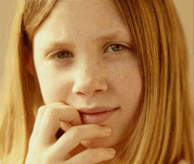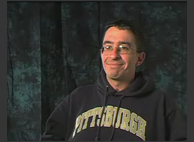| ASA: Treatment | |
| ASA: Learning Approaches | |
| Jeff, Age 35 | |
| Richard, Age 52 | |
| NIMH: Autism Spectrum Disorders (pdf) | |
| AAP - Medical Home & Early Intervention (pdf) | |

Learning Approaches
The behaviors exhibited by children on the autism spectrum are frequently the most troubling aspect of the condition for parents and caregivers. These behaviors may be socially inappropriate, repetitive, aggressive and/or dangerous, and may include:
- Hand-flapping
- Finger-snapping
- Rocking
- Placing objects in one's mouth
- Head-banging
Children with ASD may also engage in self-injurious behavior, such as eye-gouging or biting their arms; they may show little or no sensitivity to burns or bruises and may physically attack someone with no discernable provocation. The reasons for these behaviors are complex, but some professionals think that sensory integration issues contribute to them.
Communication skills, both the spoken and written word, are also an issue for some children on the autism spectrum. An individual might have difficulty understanding how typical communication works and may have difficulty with reciprocal conversation. Many children with ASD also have language difficulties, either being nonverbal or having delayed speech. Some children use language in unusual ways, such as repeating the words or sentences said to them (echolalia) or using only single words to communicate. Language difficulties may contribute to behavioral problems for a child with autism (because of an inability to use language to communicate his/her needs).
Many treatment approaches have been developed to address the range of social, language, sensory, and behavioral difficulties that may accompany the condition.
These include Discrete Trial Training (discrete trials), as part of:
- Applied Behavior Analysis (ABA)
- Treatment & Education of Autistic and Related Communication of Handicapped Children (TEACCH)
- Picture Exchange Communication Systems (PECS)
- Pivotal Response Treatment
- Floortime
- Social Stories
- Sensory Integration
- Facilitated Communication
- Complementary Approaches
- Relationship Development Intervention (RDI)



